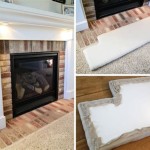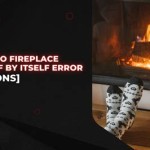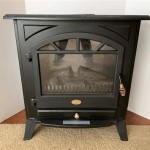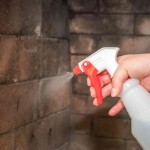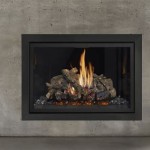```html
Gas Fireplace Service: Ensuring Safety and Efficiency
Gas fireplaces offer a convenient and aesthetically pleasing alternative to traditional wood-burning fireplaces. They provide supplemental heat, ambiance, and a focal point for any room. However, like all gas appliances, they require regular servicing to ensure safe and efficient operation. Neglecting regular maintenance can lead to a variety of issues, ranging from diminished performance to potentially hazardous gas leaks.
A comprehensive gas fireplace service typically involves a thorough inspection, cleaning, and testing of various components. The specific procedures and frequency of service may vary depending on the manufacturer's recommendations and the complexity of the fireplace model. It is crucial to adhere to these guidelines to maintain the fireplace's integrity and prolong its lifespan. Engaging qualified and certified gas fireplace technicians is essential for performing these services effectively.
Importance of Regular Gas Fireplace Inspections
Regular inspections are the cornerstone of proactive gas fireplace maintenance. These examinations identify potential problems before they escalate into significant repairs or safety hazards. A qualified technician will assess the following key areas:
Ventilation System: The ventilation system, including the venting pipes and termination cap, is crucial for safely exhausting combustion byproducts. A technician will inspect the vents for any obstructions, corrosion, or damage. Blocked vents can lead to carbon monoxide buildup, a colorless and odorless gas that can be fatal. Proper airflow is essential for complete combustion and efficient operation.
Burner Assembly: The burner assembly is where the gas is ignited to produce the flame. The technician will examine the burner ports for any clogs or debris that could cause uneven flame distribution or incomplete combustion. Cleaning the burner ports ensures a consistent and efficient flame pattern.
Pilot Light and Ignition System: The pilot light or electronic ignition system is responsible for initiating the combustion process. The technician will check the pilot light for proper flame size and stability. For electronic ignition systems, the igniter and sensors will be tested for functionality. A malfunctioning ignition system can prevent the fireplace from lighting or cause intermittent operation.
Gas Lines and Connections: The gas lines and connections must be inspected for leaks. The technician will use a gas leak detector to identify any potential leaks in the piping, valves, and fittings. Gas leaks can pose a significant fire and explosion hazard. Any leaks detected must be repaired immediately by a qualified technician.
Control Valve and Thermostat: The control valve regulates the flow of gas to the burner, and the thermostat controls the temperature. The technician will test the control valve for proper operation and ensure that the thermostat accurately regulates the temperature. A malfunctioning control valve or thermostat can lead to unregulated gas flow or inaccurate temperature settings.
Glass Door and Gasket: The glass door provides a protective barrier and enhances the appearance of the fireplace. The technician will inspect the glass for cracks or damage and ensure that the gasket creates a tight seal. A damaged glass door or worn gasket can allow heat to escape and reduce the fireplace's efficiency. A proper seal also prevents carbon monoxide from entering the living space.
Benefits of Professional Gas Fireplace Cleaning
Cleaning is another essential aspect of gas fireplace service. Over time, dust, soot, and debris can accumulate on the various components, affecting performance and potentially creating safety hazards. A professional cleaning service offers several benefits:
Improved Efficiency: A clean burner assembly and ventilation system allow for more efficient combustion, resulting in increased heat output and lower gas consumption. Removing soot and debris from the burner ports ensures a consistent and efficient flame pattern.
Reduced Risk of Carbon Monoxide Exposure: Cleaning the ventilation system removes obstructions that could lead to carbon monoxide buildup. A properly functioning ventilation system is crucial for safely exhausting combustion byproducts.
Extended Fireplace Lifespan: Regular cleaning prevents corrosion and damage to the components, extending the lifespan of the fireplace. Removing accumulated dust and debris prevents overheating and premature wear and tear.
Enhanced Appearance: Cleaning the glass door and surrounding surfaces improves the overall appearance of the fireplace. A clean fireplace adds to the ambiance of the room and enhances its aesthetic appeal.
The cleaning process typically involves several steps:
Disassembly: The technician will carefully disassemble the fireplace, removing the glass door, logs, and burner assembly.
Cleaning Components: Each component will be thoroughly cleaned using specialized tools and cleaning agents designed for gas fireplaces. This process removes soot, dust, and debris from the burner ports, logs, and other surfaces.
Inspection: During the cleaning process, the technician will inspect each component for any signs of damage or wear. This allows for early detection of potential problems before they escalate.
Reassembly: After cleaning and inspection, the technician will carefully reassemble the fireplace, ensuring that all components are properly aligned and secured.
Essential Gas Fireplace Safety Checks and Testing
Safety checks and testing are crucial to confirm the safe and reliable operation of the gas fireplace. These procedures verify that all components are functioning correctly and that there are no potential safety hazards. Key safety checks and tests include:
Gas Leak Test: A gas leak detector is used to identify any leaks in the gas lines, valves, and fittings. This is a critical safety check to prevent fire and explosion hazards. Even small leaks can be dangerous and must be addressed immediately.
Carbon Monoxide Test: A carbon monoxide detector is used to ensure that the fireplace is properly venting combustion byproducts and that there is no carbon monoxide buildup in the living space. This test is essential for preventing carbon monoxide poisoning.
Draft Test: A draft test verifies that the ventilation system is drawing air properly and that combustion byproducts are being effectively exhausted. This test ensures that the fireplace is operating safely and efficiently.
Pilot Light Flame Test: The pilot light flame is observed to ensure that it is the correct size and color. A weak or unstable pilot light flame can indicate a problem with the gas supply or the burner assembly. A properly adjusted pilot light is essential for reliable ignition.
Burner Flame Pattern Test: The burner flame pattern is observed to ensure that it is even and consistent. An uneven or erratic flame pattern can indicate a problem with the burner ports or the gas supply. A consistent flame pattern ensures efficient and complete combustion.
Following a service, a report detailing the inspections, cleaning procedures, and test results should be provided. This report serves as documentation of the service performed and provides valuable information about the condition of the fireplace. It is also important to keep records of all services performed on the fireplace, including dates, descriptions, and any repairs made.
In addition to regular professional servicing, homeowners can take several steps to maintain their gas fireplaces between service appointments. These include:
Visual Inspection: Regularly visually inspect the fireplace for any signs of damage or wear, such as cracks in the glass door or loose fittings.
Cleaning the Glass: Clean the glass door regularly with a non-abrasive glass cleaner to remove soot and buildup. Use a cleaner specifically designed for fireplace glass.
Keeping the Area Clear: Keep the area around the fireplace clear of flammable materials, such as curtains and furniture. Maintain a safe distance between combustible materials and the fireplace.
Testing Smoke Detectors and Carbon Monoxide Detectors: Regularly test smoke detectors and carbon monoxide detectors to ensure that they are functioning properly. Replace batteries as needed.
By adhering to a schedule of regular professional servicing and performing routine maintenance tasks, homeowners can ensure the safe, efficient, and reliable operation of their gas fireplaces for years to come. This proactive approach helps to prevent costly repairs, reduce the risk of safety hazards, and maximize the enjoyment of this valuable home amenity.
```
Gas Fireplace Repair Services Maryland Nova Dc

Gas Fireplace Service Repair Frederick Md Installation

Gas Fireplace Insert Repair Install Princeton Service

What You Should Know About Gas Fireplace Maintenance

Gas Fireplace Service In Winchester Tn Is Your Leaking

Fireplace Maintenance For Wood And Gas Fireplaces Sierra Hearth Home

Gas Fireplace Repair Maryland Northern Virginia Dc

Gas Fireplace Service Log Maintenance

Fireplace Repair Maintenance Cleaning Inspection Gas Service Grill

Gas Fireplace Service In Broomfield Maintenance
Related Posts

